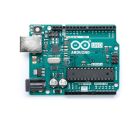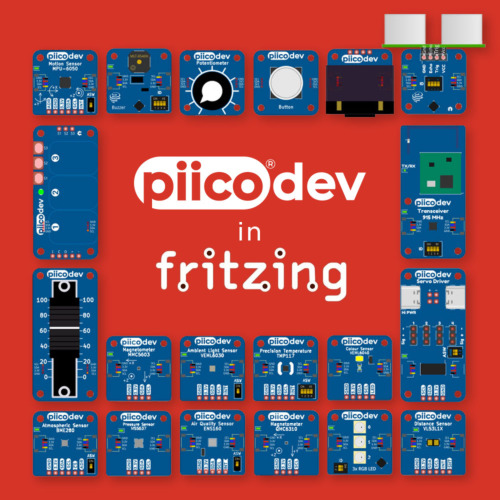USB 2.0 Type-C Connector Breakout Board (usb07a)
In stock, ships same business day if ordered before 2PM
Delivered by Tue, 16th of Dec
Quantity Discounts:
- 10+ $7.76 (exc GST)
- 25+ $7.53 (exc GST)
 |
USB 2.0 Type-C Connector Breakout Board (usb07a), bottom view with dimensions. |
|---|
The USB Type-C connector is intended to supersede a wide range of existing USB connectors. It is reversible and can serve in both USB host and USB device roles, allowing either end of a cable to be plugged into a receptacle with either side up, and it can support negotiation of increased power (up to 20 V and 5 A) and alternate uses of the USB interface wires.
The USB-C connector’s 24 tightly-spaced pins make it difficult to use in a hobby project or prototype design. This breakout board helps by providing access to the connector’s pins for power (VBUS and GND), USB 2.0 differential data (D+ and D-), Configuration Channel (CC), and Sideband Use (SBU). Each of these pins is broken out into a 1×8 row of 0.1"-spaced pins on the board, along with duplicate VBUS and GND pins for high-current applications. The included 1×10 straight male header can be soldered to these pins to allow the board to be used with standard perfboards, solderless breadboards, and 0.1" connectors.
This board does not expose the Type-C connector’s USB 3.1 SuperSpeed differential pairs (TX and RX signals), so it only supports USB 2.0 Low-Speed, Full-Speed, and High-Speed communication.
This tiny unit measures only 0.8" × 0.55" (0.8" × 0.6" including its USB Type-C connector) and has two 0.086" diameter mounting holes for #2 or M2 screws.
|
|
Using the breakout
Configuration and auxiliary pins
A Type-C receptacle can either provide power as a “Source” or consume power as a “Sink”; this usually corresponds to whether the port is a USB host (Downstream Facing Port, or DFP) or USB device (Upstream Facing Port, or UFP). The Configuration Channel, or CC, pins are used to determine the role of a port when it is connected.
This carrier board pulls the CC1 and CC2 pins to GND through 5.11 kO termination resistors, making the port a Sink and a UFP by default and allowing it to be a straightforward replacement for a Type-B, Mini-B, or Micro-B port on a USB device. If you want the port to serve as a Source instead, or if you want to perform more advanced configuration like USB Power Delivery negotiation, you can disconnect or remove the on-board resistors and make your own connections to the CC pins exposed by the board.
The Sideband Use, or SBU, pins are not used by the USB protocol. Instead, they are available for use after the USB interface has been configured to operate in an Alternate Mode, which allows it to be repurposed for other protocols and applications. This configuration is done through communication on the CC line between the host and device using the USB Power Delivery protocol.
See the USB Type-C Specification for a description of the USB-C configuration process and other technical details.
Pololu manufacture these boards in-house at Pololu's Las Vegas facility, which gives Pololu the flexibility to customize the CC termination resistors. If you are interested in customization, please contact us.
Schematic diagram
 |
This diagram is also available as a downloadable PDF: USB 2.0 Type-C Connector Breakout Board schematic (85k pdf)
Other USB breakouts
Pololu have an alternative USB 2.0 Type-C Connector Breakout Board (usb07b) that uses a different style of connector and is slightly smaller, but is otherwise functionally identical to this board (usb07a).
 |
Comparison of USB 2.0 Type-C connector breakout boards: usb07b on left, usb07a on right. |
|---|
Pololu also carry USB Mini-B and USB Micro-B connector breakout boards, and Pololu have two power muxes that double as USB Micro-B breakout boards: the FPF1320 carrier and the TPS2113A carrier. These latter two power multiplexers make it easy to have a device that can be powered from both USB and an external supply.
People often buy this product together with:
 | USB Micro-B Connector Breakout Board |
 | USB Mini-B Connector Breakout Board |
 | Mini Pushbutton Power Switch with Reverse Voltage Protection, LV |
Dimensions
| Size: | 0.8" × 0.6" × 0.18"1 |
|---|---|
| Weight: | 1.3 g2 |
Identifying markings
| PCB dev codes: | usb07a |
|---|---|
| Other PCB markings: | 0J11416 |
Notes:
- 1
- Without included optional headers. This measurement includes the USB Type-C connector, which extends 0.05" past the edge of the PCB.
- 2
- Without included optional headers.
File downloads
-
Schematic diagram of the USB 2.0 Type-C Connector Breakout Board (usb07a) (85k pdf)
-
Dimension diagram of the USB 2.0 Type-C Connector Breakout Board (usb07a) (237k pdf)
-
3D model of the USB 2.0 Type-C Connector Breakout Board (usb07a) (4MB step)
-
Drill guide for the USB 2.0 Type-C Connector Breakout Board (usb07a) (32k dxf)
This DXF drawing shows the locations of all of the board’s holes.
Recommended links
-
The USB Type-C Cable and Connector Specification explains technical details of the USB-C interface, including the configuration process for determining a port’s role.
Exact shipping can be calculated on the view cart page (no login required).
Products that weigh more than 0.5 KG may cost more than what's shown (for example, test equipment, machines, >500mL liquids, etc).
We deliver Australia-wide with these options (depends on the final destination - you can get a quote on the view cart page):
- $3+ for Stamped Mail (typically 10+ business days, not tracked, only available on selected small items)
- $7+ for Standard Post (typically 6+ business days, tracked)
- $11+ for Express Post (typically 2+ business days, tracked)
- Pickup - Free! Only available to customers who live in the Newcastle region (must order online and only pickup after we email to notify you the order is ready). Orders placed after 2PM may not be ready until the following business day.
Non-metro addresses in WA, NT, SA & TAS can take 2+ days in addition to the above information.
Some batteries (such as LiPo) can't be shipped by Air. During checkout, Express Post and International Methods will not be an option if you have that type of battery in your shopping cart.
International Orders - the following rates are for New Zealand and will vary for other countries:
- $12+ for Pack and Track (3+ days, tracked)
- $16+ for Express International (2-5 days, tracked)
If you order lots of gear, the postage amount will increase based on the weight of your order.
Our physical address (here's a PDF which includes other key business details):
40 Aruma Place
Cardiff
NSW, 2285
Australia
Take a look at our customer service page if you have other questions such as "do we do purchase orders" (yes!) or "are prices GST inclusive" (yes they are!). We're here to help - get in touch with us to talk shop.
Have a product question? We're here to help!
Guides
The Maker Revolution
Projects
PiicoDev Ecosystem In Fritzing
10" Home Lab Testing Rack
WLED Hourglass Theatre Prop - DMX Over Wi-Fi!
Makers love reviews as much as you do, please follow this link to review the products you have purchased.



















Product Comments